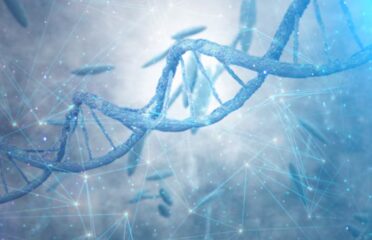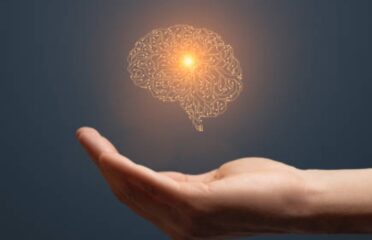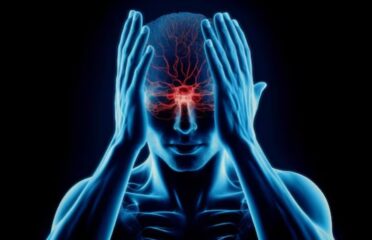Barth Syndrome
Overview

Barth syndrome, exclusively occurring in males, is a rare, genetic condition of lipid metabolism that primarily affects males, affecting multiple body systems. It is a serious X-linked genetic disorder, caused by changes in phospholipid structure and metabolism, characterised by dilated cardiomyopathy, skeletal myopathy, recurrent infections due to small numbers of white blood cells, and short stature. Barth Syndrome is exhibited in a variety of ways at birth. This disease is potentially fatal.
While a lot of patients express normal intelligence, a majority of patients express mild or moderate learning disabilities. Physical activity is also reduced due to diminished muscular development.
Symptoms
Symptoms include:
• Delayed gross motor skill development - Varying degrees of physical disability and growth - The TAZ gene is part of the X chromosome, which affects how the body grows and develops.
• Reduced muscle tone and muscle weakness
• Extreme Fatigue - exercise intolerance or lack of stamina - Weak muscle tone
• Skeletal muscle Abnormalities - Poorly developed skeletal muscles
• Increased frequency of infections - Failure to thrive and other abnormalities in growth
• Different facial features in childhood, including a round face with full cheeks, broad forehead, prominent chin, large ears, and deep-set eyes. There is an increase in organic acids that results in abnormal mitochondria function.
Causes & Risks
The causes of Barth syndrome can be explained as:
• The Tafazzin gene (TAZ) is the cause of Barth syndrome. The gene is part of the X chromosome, affecting the body's growth. Sex-linked genetic disorders are inherited through either the X or Y chromosome.
• This gene guides protein development in the energy-producing part of cells (the mitochondria). The cells also have a role in bone development.
• The mutations cause the protein to become ineffective, so there’s less fuel for the mitochondria, resulting in tissue with high energy demands — like the heart, muscles, and immune system — not being able to function as it should.
• There is a 50 percent chance of passing the gene to the children, from the women who have it.
Test & Diagnosis
• Barth syndrome is normally diagnosed shortly after a baby is born. Diagnosis is made during a thorough newborn evaluation. It can detect cardiovascular conditions, neutropenia, and some of the physical characteristics that are often associated with Barth syndrome.
• Several laboratory tests can be undertaken to confirm the diagnosis of Barth syndrome.
• Finding a Tafazzin gene, a mutation that disables protein synthesis or function is the most definitive test linked to Barth syndrome.
• As completion of the tests can take more time than desirable when a child has critical cardiac issues, other laboratory tests, in the appropriate clinical setting can be all but diagnostic of Barth syndrome.
• Genetic and biochemical testing today is provided very generously by research laboratories
Treatment
• There is no specific treatment for Barth syndrome, but certain medications can treat some of the symptoms. Early and accurate diagnosis is very crucial. A professional medical team may be needed for care.
• Treatment is approached case by case, though children with the condition usually need to work with a team of medical professionals to ensure all their health needs are addressed.
• Therapists such as ‘Occupational and Physical’, can help children, struggling with physical disability due to muscle weakness. Some persons with Barth syndrome use mobility aids.
• Children can undergo special education interventions if they are struggling with learning disabilities, at school. They may even experience social challenges due to their limited ability to participate in physical activities.
Living With
What is it to live with Barth syndrome?
Living with Barth syndrome can face challenges and affect various aspects of daily life. It affects males and often leads to weakened heart muscles, resulting in heart failure, and decreased energy levels. Some may even experience growth delays, leading to slower weight gain. Muscle weakness and other issues can delay physical development. This includes difficulty crawling, walking, or maintaining balance.
Fatigue and decreased energy levels are very common, impacting the ability to engage in physical activities.
Barth syndrome does not affect intelligence, but children may experience challenges with problem-solving skills. Reduced immune function might increase susceptibility to infections.
Complications
• Barth syndrome affects males and can lead to several complications that impact various aspects of health and daily life.
• Weakness of the heart can result in heart failure, causing symptoms like fatigue, shortness of breath, and an increased risk of heart-related complications.
• Individuals with Barth syndrome experience low muscle tone, and delayed growth, which can affect motor skills and physical development.
• Low energy levels are quite common, impacting the ability to engage in physical activities and daily routines.
• Reduced immune function may make individuals more prone to infections or illnesses, leading to increased susceptibility to various health issues.
• Individuals might even experience gastrointestinal issues, such as feeding difficulties.





